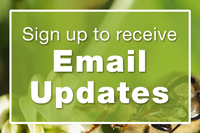
Stewardship Guidelines and BMPs for Soil and Foliar-applied Neonicotinoid Insecticides
The MDA adopted stewardship guidelines and best management practices (BMPs) for soil and foliar-applied neonicotinoid insecticides. These voluntary BMPs were developed in response to a special registration review on neonicotinoid insecticides. The MDA, in cooperation with University of Minnesota Extension and others, has developed these BMPs to address the potential risk to pollinators from soil or foliar neonicotinoid insecticide applications.
- Stewardship Guidelines and Best Management Practices for Soil and Foliar-applied Neonicotinoid (PDF)
The MDA would like to thank those who reviewed and provided comments on these BMPs.
Stewardship Guidelines and BMPs for Home and Residential Use of Neonicotinoid Insecticides
The MDA adopted Stewardship Guidelines and BMPs for Home and Residential Use of Neonicotinoid Insecticides. These voluntary BMPs were developed in response to special registration review on neonicotinoid insecticides. The MDA, in cooperation with University of Minnesota Extension and others, has developed these BMPs to protect pollinators and their habitat.
The MDA would like to thank you those who reviewed and provided comments on these BMPs.
Stewardship Guidelines and BMPs for Neonicotinoid Insecticide-Treated Seed
The MDA adopted stewardship guidelines and BMPs for neonicotinoid insecticide-treated seed. These voluntary BMPs were developed in response to a special registration review on neonicotinoid insecticides. The MDA, in cooperation with University of Minnesota Extension and others, has developed these BMPs to address the potential risk to pollinators from the seed treatment dust during planting season.
The MDA would like to thank those who reviewed and provided comments on these BMPs.
Pollinator Habitat BMPs
The habitat BMPs have been developed to protect wild and managed insect pollinators by providing habitat for their survival and reproduction. These BMPs provide voluntary practices to help REDUCE negative impacts on pollinator habitat resulting from current management practices. IMPROVE existing habitat, and CREATE new habitat in Agricultural Landscapes, Roadsides and Rights-of-Way, and Yards and Gardens.
There are BMPs for three specific landscapes:
- Agricultural Landscapes (PDF)
- Yards and Gardens (PDF)
- Make Your Yard Bee-Friendly, simple summary (PDF)
- Roadsides and Rights-of-ways (PDF)
These practices are incorporated into pesticide applicator and county agricultural inspector training, and are promoted to increase public awareness of the importance of pollinators and pollinator habitat.
What Can You Do?
For a number of years a complex set of factors has negatively affected domesticated honey bee health and populations in Minnesota, the U.S. and elsewhere.
Likewise, the health and numbers of native insect pollinators (wild bees, flies, wasps, moths, butterflies, and other pollinating insects) have declined due to a number of factors, including exposure to pathogens, parasites and pesticides, as well as habitat fragmentation and disappearance of floral resources.
Each of us can do something to help pollinators. Simple acts, such as planting more pollinator-attractive flowers, leaving ornamental grasses uncut in the fall to provide overwinter habitat, or using pesticides only when necessary, can make a big impact.
Like the MDA on Facebook and follow them on Twitter at @mnagriculture.
Making a Difference Across Minnesota
Neighbors across the state are already making a big impact on pollinators and their habitat. Read more about their efforts. You can also take advantage of federal and state programs to help you establish new habitat. More info from the Minnesota Board of Water & Soil Resources.


